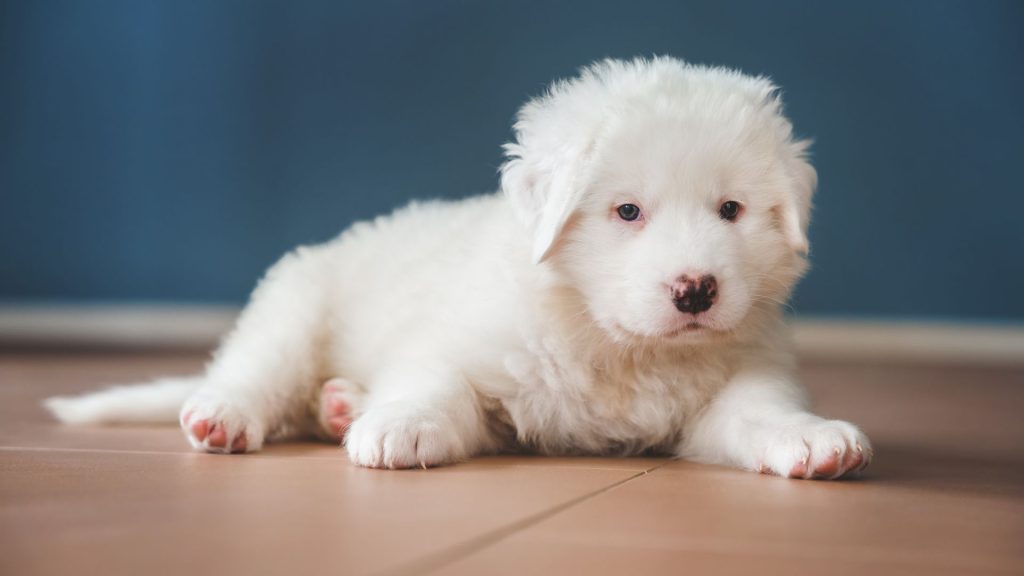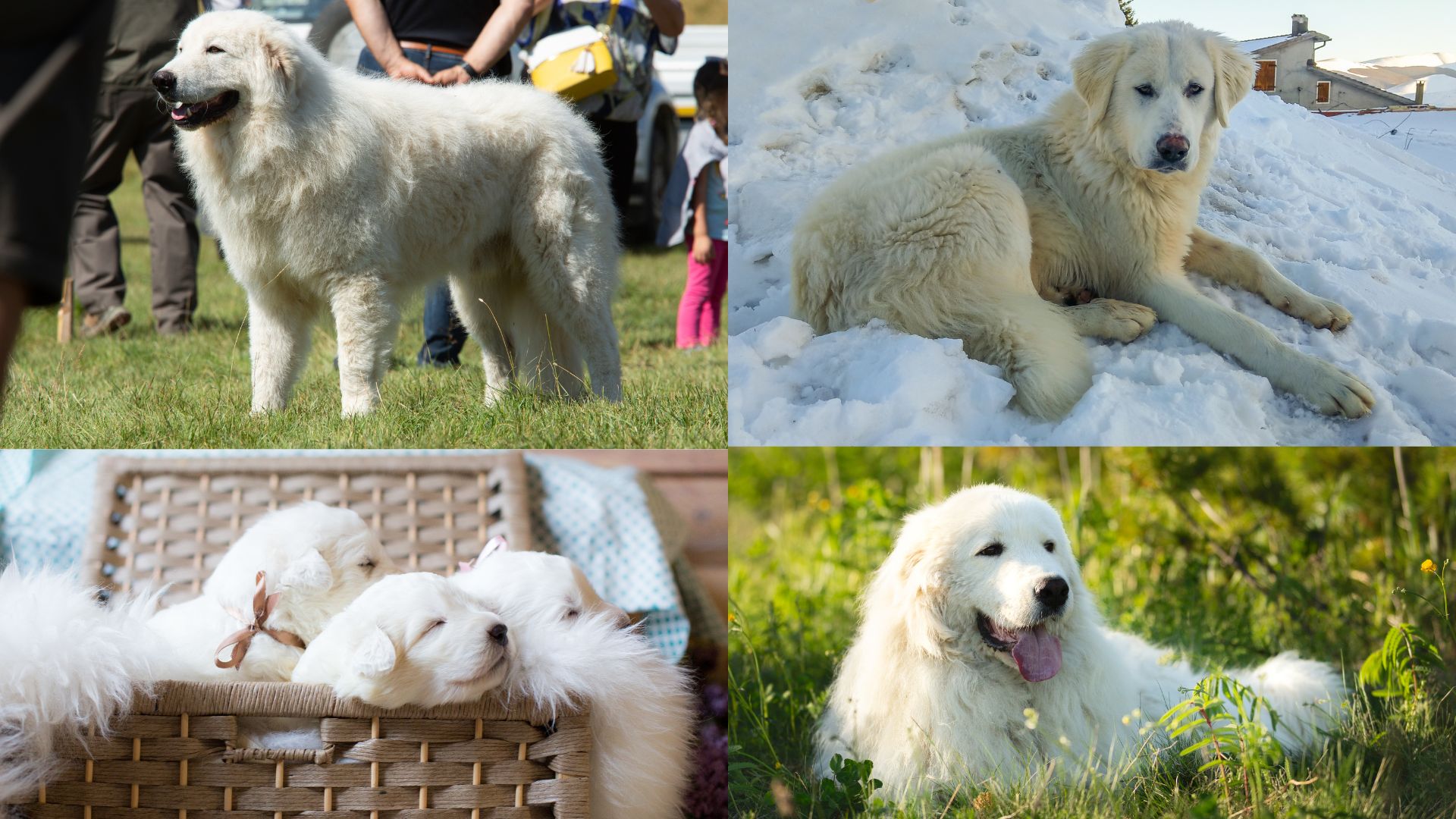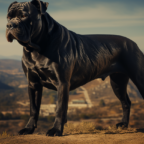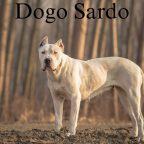Click and GO TO THE BEST DOG NAME GENERATOR HERE

The Maremma Sheepdog is a versatile and distinctive breed renowned for its ability to serve as an effective guardian of flocks. Its imposing physical appearance, with a bear-like stature and intelligent expression, exudes nobility and commands respect. This breed exhibits a balanced and friendly temperament, making it both loyal and courageous in its role as a guard dog.
Notably, the Maremma Sheepdog does not rely on constant attention, displaying a self-sufficiency that is characteristic of its breed. To thrive, this dog requires calm and consistent leadership and generally gets along well with other dogs and pets.
Due to its size, ranging from 23.5 to 28.5 inches in height and weighing between 66 to 100 pounds, the Maremma Sheepdog is better suited to large yards and open spaces rather than apartment living. Regular exercise, encompassing both mental and physical stimulation, is essential to maintain its calm demeanor indoors.
With an average lifespan of 11-13 years, this breed necessitates regular grooming to preserve its all-weather coat. Originating in Italy and recognized by various kennel clubs, the Maremma Sheepdog exemplifies its versatility and adaptability as a flock guardian through its physical characteristics, temperament, and working capabilities.
History and Origins
The Maremma Sheepdog, with its imposing presence and protective nature, has deep historical roots that stretch back to ancient Roman times. When we picture the vast landscapes of Italy, it’s hard to imagine it without these majestic canines steadfastly watching over their flocks.
In ancient Rome, these dogs weren’t just a shepherd’s companion – they were the unsung heroes of the livestock world. Large, strong, and fearless, Maremma Sheepdogs quickly became the guardians of choice, shielding herds from the ever-present threat of predators, most notably wolves. Their undeniable commitment to the protection of livestock wasn’t just a chance development. These dogs were painstakingly bred for this very purpose. Over the centuries, their traits – from their acute senses to their undying loyalty – were fine-tuned to make them the ideal defenders of the flock.
But beyond the practicalities of predator protection, the Maremma Sheepdog carved a special place in Italian culture. To many, they’re not just dogs – they’re symbols of a pastoral way of life that has persisted for millennia. In Italy, shepherding wasn’t just an occupation, but a tradition passed down through generations. As integral members of this tradition, Maremma Sheepdogs were, and still are, revered for their essential role in keeping this way of life alive.
The presence of these dogs in Italy’s agricultural landscape wasn’t just a matter of convenience, but of survival. Without them, flocks were vulnerable, and the livelihoods of countless shepherds were at risk. In essence, the Maremma Sheepdog became the very heartbeat of pastoral Italy, ensuring that both sheep and shepherd could rest easy, knowing they were safeguarded from potential threats.
In wrapping up, understanding the historical significance of Maremma Sheepdogs is like piecing together a rich tapestry of Italian pastoral life. Their role was never just about protection; it was about upholding a way of life, a tradition, and a culture that thrives to this day. And so, the next time you see one of these noble dogs, remember: you’re not just looking at a pet, but a living testament to centuries of Italian history and tradition.
Key Takeaways
- The Purebred Maremma Sheepdog is a massive and distinctive-looking dog with a bear-like head and strong jaws.
- They are friendly and well-balanced flock guardians, known for their loyalty, bravery, and determination.
- Maremma Sheepdogs require calm, firm, and consistent leadership and are slightly reserved with strangers.
- They need a large yard and wide-open spaces, as well as both mental and physical exercise to stay healthy and calm indoors.
Physical Characteristics
The physical characteristics of the Purebred Maremma Sheepdog include:
- A massive and distinctive-looking body
- A bear-like head with strong jaws and a scissors bite
- A black nose that may become pink-brown with age
- V-shaped pointed ears
- A lively and intelligent expression in the eyes
This breed is known for its noble appearance and commanding presence. The Maremma Sheepdog is a large dog, with males standing between 23.5 to 28.5 inches (60 to 73 cm) tall and weighing between 66 to 100 pounds (30 to 45 kg).
Their size and strong build make them well-suited for their role as flock guardians. Additionally, their physical features, such as their size and powerful jaws, contribute to their ability to protect their flock from predators.
Overall, the physical characteristics of the Purebred Maremma Sheepdog reflect their heritage as a capable and imposing working dog.
Maremma Sheepdogs: Nurturing Their Energy Through Proper Exercise
For those considering the Maremma Sheepdog as a potential pet, it’s essential to understand the breed’s exercise needs fully. Like any dog, the Maremma has specific physical and mental requirements that, when met, ensure a happy, healthy, and well-adjusted canine companion.
1. Daily Exercise Requirements: Maremma Sheepdogs, known for their guarding and herding background, possess a considerable amount of energy. To keep them in top form, it’s recommended that these dogs receive at least an hour to an hour and a half of structured exercise daily. This doesn’t just mean a leisurely stroll around the block, though that’s a good start. Activities that allow them to stretch their legs and truly expend energy are vital. This could be in the form of a brisk walk, playtime in a spacious yard, or even controlled off-leash time in a secured area. Keep in mind that while physical activity is crucial, mental stimulation is equally important. Incorporating fetch games, agility training, or even herding exercises can be invaluable in keeping their minds sharp and engaged.
2. Activities Suited for Their Energy Levels: Given their heritage, Maremma Sheepdogs thrive when participating in activities that tap into their natural instincts. Herding exercises, for instance, can be an excellent way to channel their energy productively. Additionally, agility courses or training sessions that challenge their intellect can be highly beneficial. These dogs are thinkers, and allowing them to solve problems or master new commands can be as exhausting and satisfying for them as a long run.
3. The Importance of Space and Potential Consequences of Inactivity: Space is a significant factor for Maremma Sheepdogs. They’re used to open fields and expansive territories, which means they’re best suited for homes with large yards or access to open spaces. Confined environments can lead to feelings of restriction and stress for this breed. If a Maremma doesn’t receive adequate exercise, several issues could arise. These might include unwanted weight gain, which brings its own set of health issues, or behavioral problems like destructiveness or excessive barking. In essence, a well-exercised Maremma is a content and well-behaved Maremma.
In conclusion, while the Maremma Sheepdog is a loyal, affectionate, and brilliant breed, potential owners should be well-aware of their exercise needs. Meeting these requirements will not only ensure the health and happiness of the dog but also solidify a strong, lasting bond between owner and pet.
Temperament
Friendly and well-balanced, the Purebred Maremma Sheepdog is known for its loyalty, bravery, and determination in its role as a guard dog.** This versatile breed possesses a unique temperament that makes it an excellent flock guardian and a trusted family member. For potential owners, understanding the intricacies of this breed’s temperament can make all the difference in ensuring a harmonious bond. Here are three key characteristics of the Maremma Sheepdog’s temperament, accompanied by insights to guide prospective owners:
1. Affectionate yet independent: Maremmas are known to form strong bonds with their owners and families. Their loyalty runs deep, and they often showcase a fierce protectiveness over their loved ones. They are affectionate and relish the moments they spend with family. However, it’s worth noting their independent streak. This independence allows them to make decisions autonomously, especially in their guardian role, and it speaks to their heritage. Potential owners should understand this breed’s inclination to be independent thinkers. They thrive when they have a purpose or job, which keeps them mentally stimulated and content.
2. Calm and composed: Maremmas possess a serene demeanor, which is crucial for their role as guardians. Their instinctual ability to evaluate situations means they act without unnecessary aggression or fear. This calm and measured approach, combined with their natural bravery, allows them to handle challenging situations adeptly, ensuring the safety of their flock or family.
3. Reserved with strangers: While Maremmas exude warmth and sociability with those they recognize, they exhibit a noticeable reserve with unfamiliar faces. Stemming from their guarding instincts, this caution ensures they remain vigilant in uncertain situations. Nevertheless, early and consistent socialization can temper this reservation, making them more receptive to new people and experiences.
In summation, the Maremma Sheepdog is not just defined by its guardian role. Its rich temperament, encompassing loyalty, intelligence, and bravery, cements its status as both an unparalleled protector and a treasured family companion. Future owners should appreciate these nuances to truly harness the bond they can share with this exceptional breed.
Origin and History
| Trait | Description |
|---|---|
| Size | Height: 23.5 – 28.5 inches (60 – 73 cm) |
| Weight | 66 – 100 pounds (30 – 45 kg) |
| Temperament | Friendly, loyal, brave, and determined |
| Living Conditions | Needs a large yard and wide-open spaces |
| Exercise | Requires both mental and physical exercise |
| Grooming | Regular combing and brushing to maintain its all-weather coat |
This table highlights the Maremma Sheepdog’s physical characteristics, temperament, living conditions, exercise needs, and grooming requirements.
Pictures and Examples

Pictures and examples of the Purebred Maremma Sheepdog showcase its distinctive appearance and behavior, highlighting its adaptability and dedication to its work as a livestock protector. These images provide a visual representation of the Maremma Sheepdog at different stages of its life, allowing observers to appreciate its massive and noble physique.
The bear-like head, strong jaws, and V-shaped, pointed ears give it a distinct and powerful presence. The lively and intelligent expression in its eyes reflects its alertness and quick thinking.
Additionally, these pictures demonstrate the breed’s versatility and adaptability, as they show the Maremma Sheepdog in various working environments, such as open fields and pastures. This breed’s commitment to its role as a flock guardian is evident in its focused and determined demeanor.
Overall, these visual examples effectively portray the unique qualities and capabilities of the Purebred Maremma Sheepdog.
Frequently Asked Questions
Are Maremma Sheepdogs good with children?
Maremma Sheepdogs have a generally good reputation for being good with children. They are known to be gentle, patient, and protective of their family, including children.
However, it is important to note that every dog is an individual, and their behavior can be influenced by factors such as socialization, training, and the specific personality of the dog.
Therefore, it is recommended to supervise interactions between Maremma Sheepdogs and children, and to teach children how to properly interact with dogs to ensure a positive and safe environment for both.
How do Maremma Sheepdogs handle being left alone for long periods of time?
Your Maremma Sheepdog will struggle with being left alone for long periods of time. As highly social and protective dogs, they thrive on human companionship and can become anxious or develop separation anxiety when left alone.
It is important for owners to provide them with mental stimulation, exercise, and opportunities for socialization. This helps alleviate these issues. Crate training and gradually increasing the amount of time left alone can help them adjust.
Can Maremma Sheepdogs be trained to do tricks or participate in dog sports?
Your Maremma Sheepdogs you can train to do tricks and participate in dog sports. Their intelligence and willingness to please make them suitable for various training activities.
However, it is important to note that their primary role is as flock guardians, and their training should prioritize their natural instincts and abilities.
Maremma Sheepdogs excel in activities such as obedience, agility, and herding trials. With proper training and socialization, they can showcase their versatility and adaptability in various dog sports.
Do Maremma Sheepdogs have any common health issues?
Maremma Sheepdogs are generally a healthy breed with few common health issues. However, like all dogs, they can be prone to certain conditions.
Some potential health concerns for Maremma Sheepdogs. Include hip dysplasia, which is a malformation of the hip joint that can lead to pain and lameness. As well as eye disorders such as progressive retinal atrophy.
All Responsible breeders should test their dogs for these conditions to minimize the risk of them being passed on to offspring. Regular veterinary check-ups can help detect and manage any potential health issues.
Are Maremma Sheepdogs prone to excessive barking?
Maremma Sheepdogs are not generally prone to excessive barking. You need know that with their alertness will bark to alert their owners of potential threats or intruders. They do not engage in excessive or unnecessary barking.
With proper training and socialization, Maremma Sheepdogs can learn appropriate barking behaviors and be responsive to their owner’s commands. It is important to note that individual dogs may exhibit different levels of barking. Early training can help establish desired behaviors.
We hope you enjoyed the article and see you in the next
Welcome to our ever-growing collection of Italian Dog Breeds! As we continually dive deeper into the marvelous world of these dogs, you can expect this list to expand further.
We’ve curated this selection for you to explore and enjoy. Remember, your experience matters to us! So, don’t hesitate to tell us which Italian dog breed tugs at your heartstrings the most.
What’s more, we’d absolutely love to see images of these captivating breeds from your personal collection. If you’d like to share, we encourage you to send them in! Immerse yourself in this delightful canine journey, and remember to share your favorites with us. Let’s celebrate the beauty of Italian Dog Breeds together!
Our wealth of information about Italian Dog Names comes from a diverse blend of resources, complemented by our own extensive knowledge. We’ve strived to create the most comprehensive online hub for everything related to Italian Dog Names, and we couldn’t have done it without some highly respected and incredibly useful references.
Whether you’re searching for the perfect Italian name for your canine companion, looking for Italian words and phrases for training, or curious about the various Italian dog breeds, rest assured that our content is thoroughly researched.
Our work is a meticulously woven tapestry of information that we’ve compiled from these trusted sources. As we continue to grow our website, we commit to maintaining this high standard of quality and accuracy in our content. So, sit back, explore, and enjoy your journey through the world of Italian Dog Names with us.
- Bergamasco Shepherd
- Bracco Italiano
- Cane Corso
- Cirneco dell’Etna
- Italian Dog Breeds article
- Lagotto Romagnolo
- Levriero Sardo
- Pyrenean Sheepdog
- Segugio Maremmano
- Volpino Italiano
- Spinone Italiano
- Cane di Oropa
- Italian Greyhound
- Rafeiro do Alentejo
- Segugio Italiano
- Maremma Sheepdog
Welcome to the heart of everything that revolves around Italian Dog Names! But we’re not merely stopping at offering you an array of charming names for your furry companion. Oh no, our dedication goes far beyond that.
With an earnest desire to enrich your bonding experience with your dog, we dive headfirst into the realm of Italian dog commands. An absolutely indispensable section, it aids in training your canine pal impeccably, regardless of whether you plan to use these Italian phrases or commands in your routine or not.
And then, we have a whole new section devoted entirely to the myriad Italian Dog Breeds. Here, we walk you through the wide-ranging breeds associated with Italy. Some of these, you might be surprised to learn, are often not perceived as Italian breeds. Yet, they share a rich and complex bond with Italy, either historically or otherwise.
Naturally, our list would be incomplete without spotlighting the authentic Italian dog breeds that are purebreds, with their lineage tracing straight back to Italy. These breeds are Italy’s very own, born and bred on its enchanting soil.
So, whether you’re a dog lover, an enthusiast for all things Italian, or simply curious, we invite you to immerse yourself in our website. Most importantly, revel in the unique charm of your Italian Dog Breed. We promise you an engaging journey, filled with delightful discoveries. Welcome, and enjoy the exploration!



